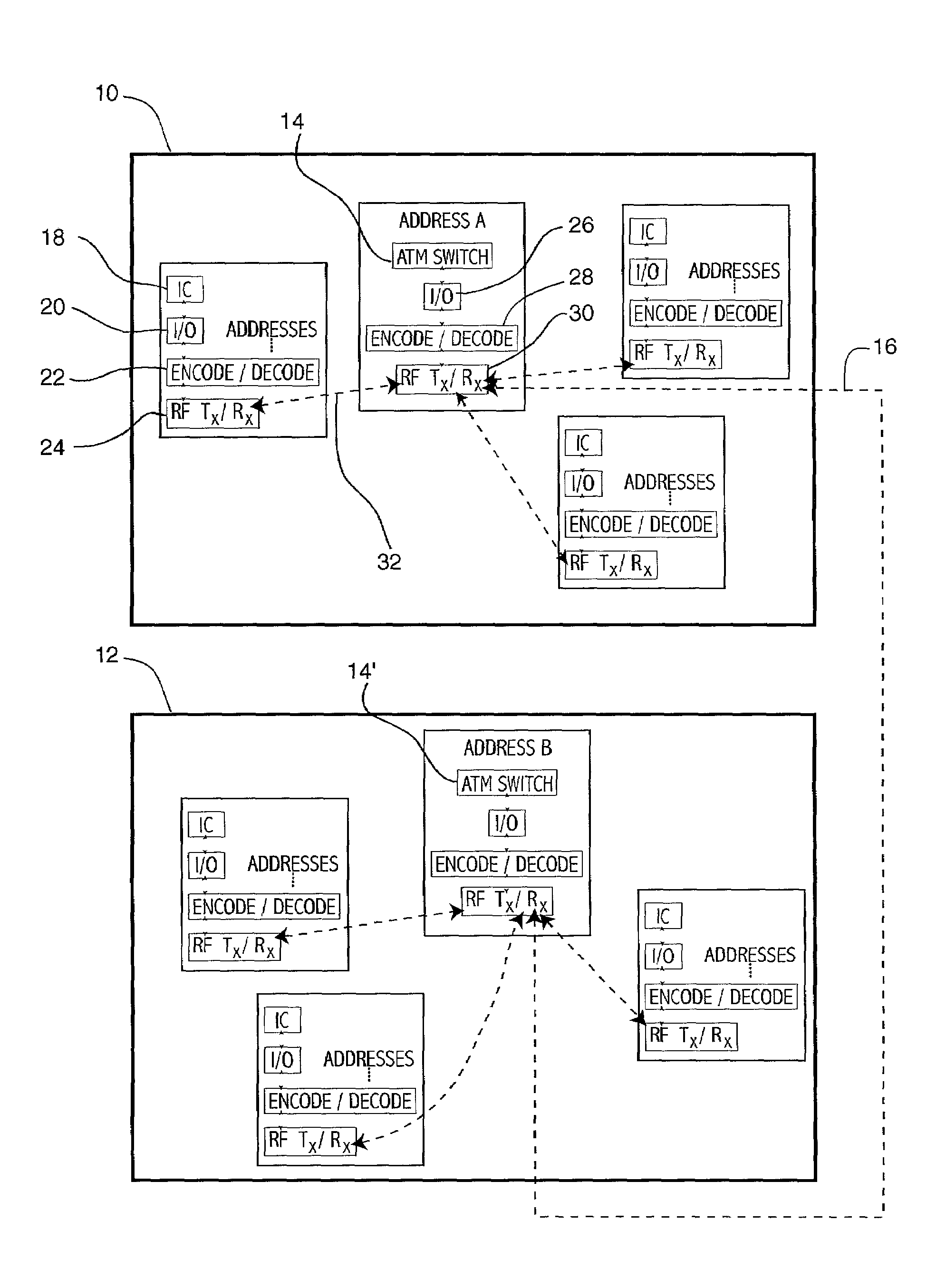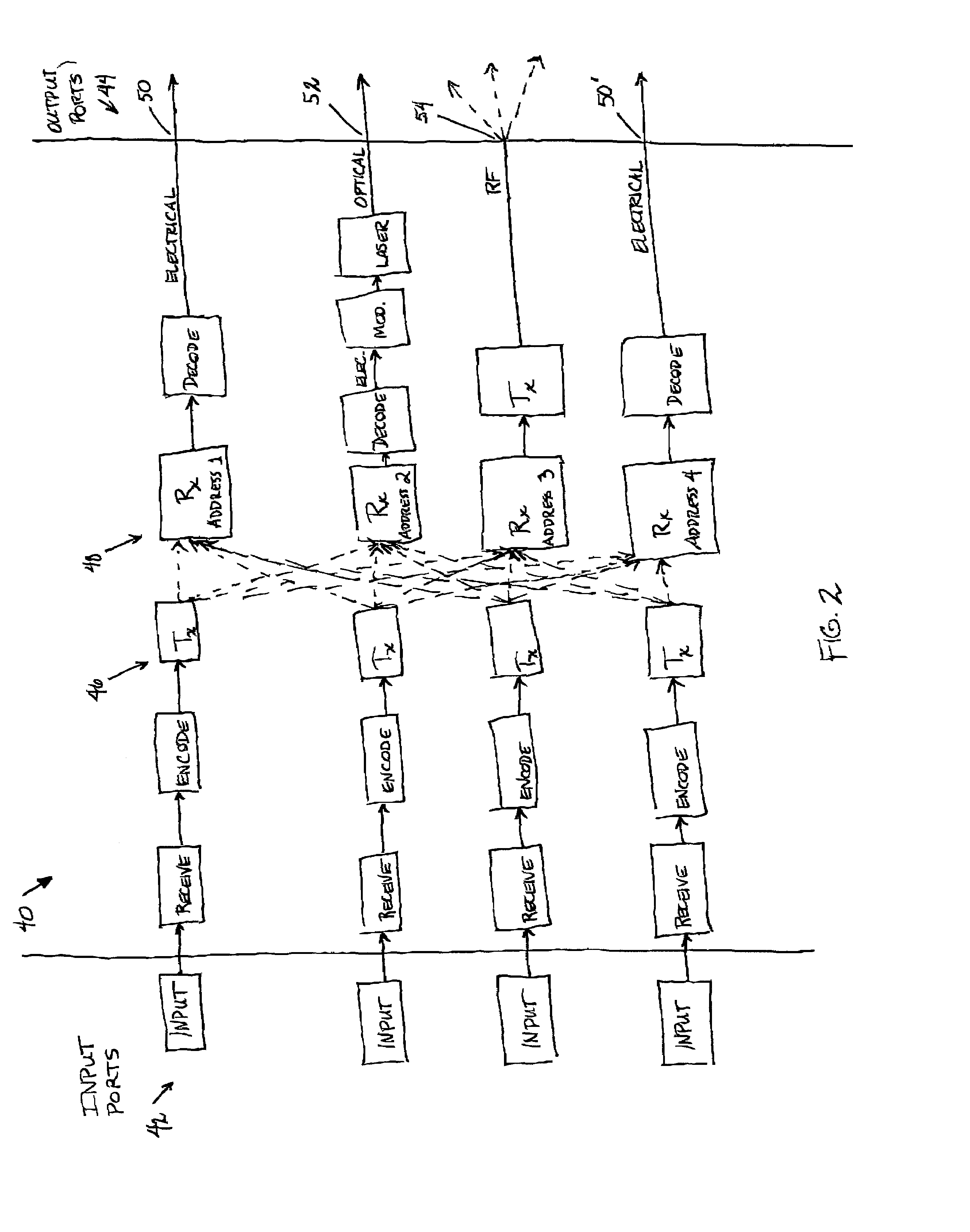Localized radio frequency communication using asynchronous transfer mode protocol
a technology of asynchronous transfer and local radio frequency communication, applied in the field of wireless communication, can solve the problems of limiting the flexibility of a given circuit board design, redesigning and manufacturing a new circuit board, and high cost and time consumption, and achieves high pin density, noise-free connection, and high speed.
- Summary
- Abstract
- Description
- Claims
- Application Information
AI Technical Summary
Benefits of technology
Problems solved by technology
Method used
Image
Examples
second embodiment
[0030]In the present invention, ATM switching and communication protocol is eliminated and interboard and intraboard communications take place directly through RF transmissions between circuit board components. Communication signals are “addressed” according to frequency and / or according to an encoding scheme to the appropriate IC I / O connection.
third embodiment
[0031]In a third embodiment, the backplane of an ATM switch is eliminated. In this embodiment, low power transmitters and receivers are used as in the first two embodiments and the switch circuit board is shielded against RF emissions to inhibit RF interference from the environment external to the switch and to inhibit the switching signals from entering the external environment. Communication data signals, such as ATM information cells, are input to and output from the circuit board through the circuit board I / O ports via any conventional means, such as fiber optics, twisted copper wire pairs, or RF transmission, but are routed via RF transmissions. This embodiment eliminates the need for a crossbar or other electronic switching matrix mechanism that is typically used in the backplane of prior art ATM switches. (Other functions of ATM switching, such as connection establishment and management, “quality of service” negotiation, and other ATM functions are still performed as required...
PUM
 Login to View More
Login to View More Abstract
Description
Claims
Application Information
 Login to View More
Login to View More - R&D
- Intellectual Property
- Life Sciences
- Materials
- Tech Scout
- Unparalleled Data Quality
- Higher Quality Content
- 60% Fewer Hallucinations
Browse by: Latest US Patents, China's latest patents, Technical Efficacy Thesaurus, Application Domain, Technology Topic, Popular Technical Reports.
© 2025 PatSnap. All rights reserved.Legal|Privacy policy|Modern Slavery Act Transparency Statement|Sitemap|About US| Contact US: help@patsnap.com



